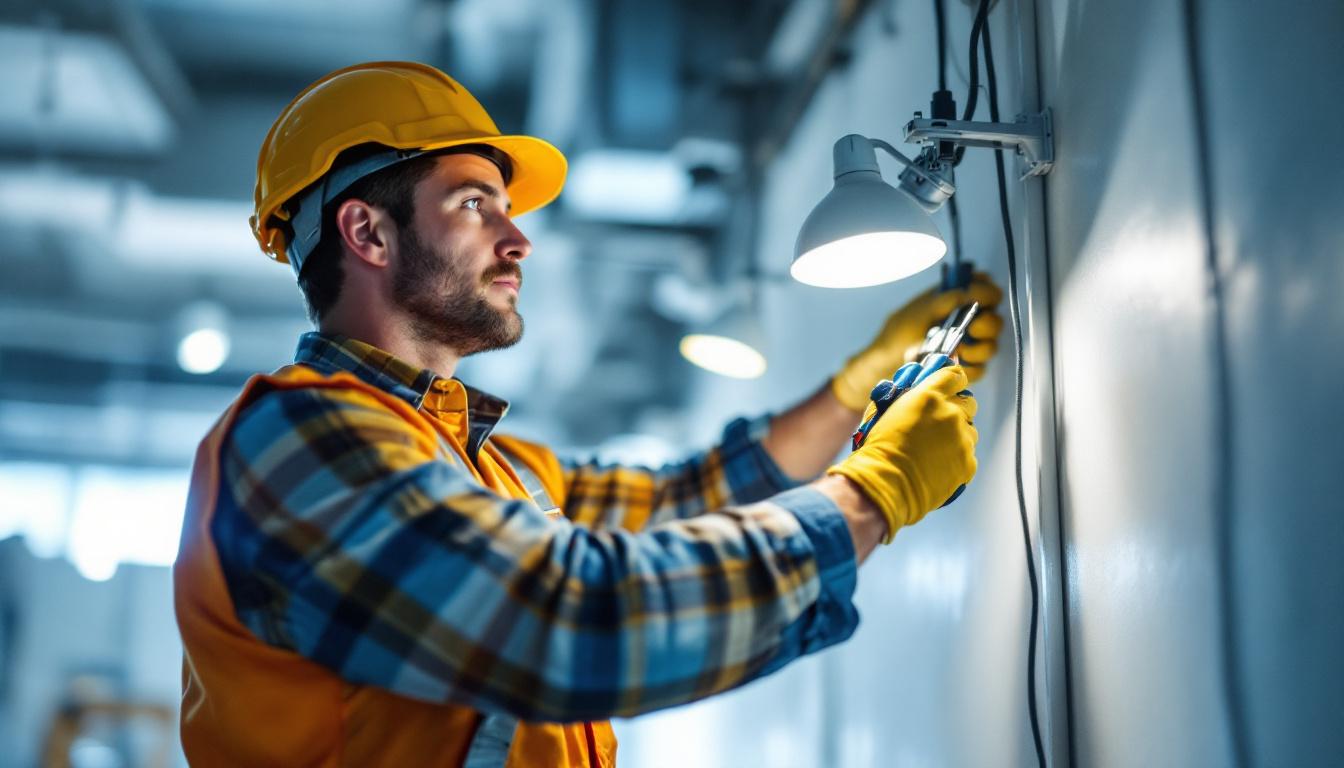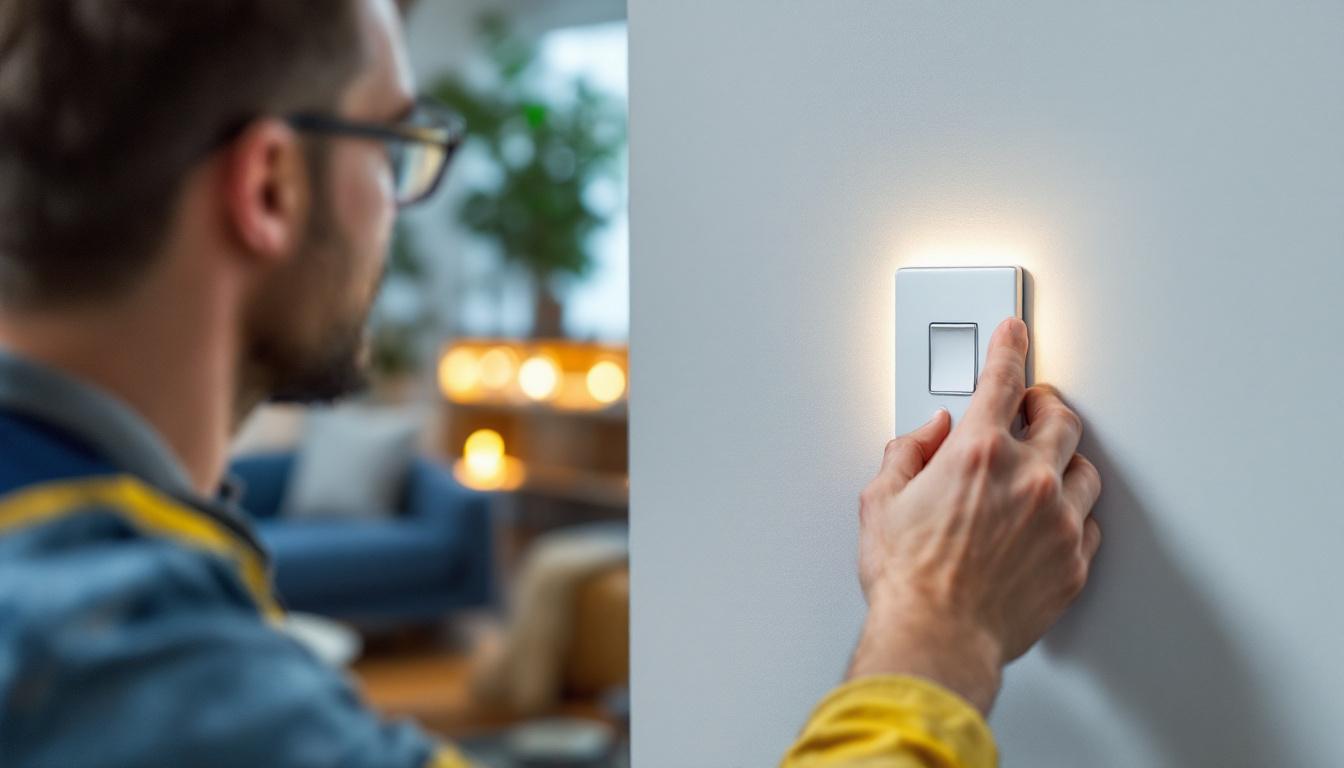
For lighting contractors, the ballast cover is more than just a protective component; it is a critical element that ensures the longevity, safety, and performance of lighting fixtures. Ballasts regulate the current to lamps, providing the necessary voltage to start and maintain illumination. The cover protects this sensitive equipment from environmental factors, mechanical damage, and electrical hazards.
Neglecting the ballast cover can lead to premature ballast failure, increased maintenance costs, and potential safety risks. Therefore, understanding the specifications and requirements of ballast covers is essential for professionals tasked with installing, maintaining, or upgrading lighting systems.
Ballast covers shield the ballast from dust, moisture, and physical impacts. In commercial and industrial environments, where lighting fixtures are exposed to harsh conditions, the cover prevents corrosion and electrical shorts. Additionally, it acts as a barrier against accidental contact, reducing the risk of electric shock during maintenance.
Moreover, ballast covers contribute to the overall aesthetic of lighting fixtures. A well-designed cover complements the fixture’s appearance, maintaining a clean and professional look, which is particularly important in retail and office spaces where visual appeal matters.
In addition to their protective and aesthetic functions, ballast covers also play a role in energy efficiency. By ensuring that ballasts operate within their optimal temperature range, these covers can help prevent overheating, which not only prolongs the life of the ballast but also enhances the efficiency of the lighting system as a whole. This is especially relevant in energy-conscious environments where minimizing operational costs is a priority. Furthermore, modern ballast covers are often designed with materials that reflect heat, contributing to a cooler operating environment and reducing the load on HVAC systems.
Another important aspect to consider is the variety of ballast cover designs available on the market. Depending on the specific application, contractors can choose from a range of materials, including polycarbonate, metal, or even specialized composites that offer enhanced durability and resistance to UV light. This variety allows for tailored solutions that meet the unique demands of different settings, from warehouses to high-end retail spaces, ensuring that the lighting system not only functions well but also integrates seamlessly with the overall design of the environment.
Choosing the right ballast cover requires a thorough assessment of several factors. Lighting professionals must evaluate the environment, ballast type, and compliance requirements to ensure optimal performance and safety.
Ballast covers are commonly made from metal, plastic, or composite materials. Metal covers, often steel or aluminum, offer superior durability and heat dissipation but may be prone to corrosion if not properly treated. Plastic covers are lightweight and resistant to corrosion but may degrade under high temperatures or UV exposure.
Durability is crucial in environments such as warehouses, factories, or outdoor installations where covers face mechanical stresses and exposure to chemicals or moisture. Selecting a cover with appropriate ingress protection (IP) ratings ensures resistance to dust and water, with IP65 or higher recommended for outdoor or damp locations. Additionally, the choice of material can affect the overall aesthetic of the installation; for instance, sleek aluminum covers may be preferred in modern architectural designs, while robust steel options might be favored in industrial settings for their rugged appearance.
Ballast covers must fit securely over the specific ballast model and lighting fixture. Universal covers may not provide adequate protection or may interfere with fixture operation. It is essential to verify dimensions, mounting points, and ventilation requirements.
For electronic ballasts, proper ventilation is vital to prevent overheating. Covers with ventilation slots or perforations allow heat dissipation while maintaining protection. Conversely, magnetic ballasts may require different cover designs due to their size and heat output. Furthermore, the design of the cover can also influence the ease of maintenance; covers that allow for quick access to the ballast can save time and reduce downtime during repairs or replacements, making them a practical choice for facilities with high lighting demands.
Lighting professionals must ensure ballast covers meet relevant safety standards such as UL (Underwriters Laboratories), CSA (Canadian Standards Association), or IEC (International Electrotechnical Commission) certifications. These standards guarantee that covers have been tested for electrical safety, fire resistance, and mechanical strength.
Compliance with local building codes and electrical regulations is also mandatory. For example, in hazardous locations, explosion-proof ballast covers are necessary to prevent ignition of flammable gases or dust. It’s also worth noting that some regions may have specific energy efficiency standards that affect the choice of ballast and cover, promoting the use of energy-efficient lighting solutions. As sustainability becomes increasingly important, selecting covers that align with green building practices can not only enhance safety and compliance but also contribute to a facility’s overall environmental goals, making it a responsible choice for modern lighting installations.
Proper installation of ballast covers is essential to maximize their protective function and maintain fixture performance. Lighting contractors should follow manufacturer guidelines and industry best practices to ensure a secure and effective installation.
Before installation, inspect the ballast and cover for any damage or defects. Verify that the ballast is functioning correctly and that the cover fits the fixture without obstruction. Check for any sharp edges or burrs on metal covers that could cause injury or damage wiring. Additionally, it is advisable to review the installation manual thoroughly to familiarize yourself with any specific requirements or recommendations provided by the manufacturer. This proactive approach can help identify potential issues early on, ensuring a smoother installation process.
Ballast covers should be firmly attached using the appropriate screws, clips, or fasteners specified by the manufacturer. Loose covers can vibrate, leading to noise and potential damage over time. In damp or outdoor environments, use gaskets or sealants to prevent moisture ingress. It’s also beneficial to consider the use of corrosion-resistant fasteners, especially in environments prone to humidity or exposure to chemicals, as this can significantly enhance the longevity of the installation.
Ensure that ventilation openings are not blocked during installation. Proper airflow is critical to dissipate heat generated by the ballast, preventing overheating and extending the ballast’s lifespan. In some cases, it may be necessary to install additional ventilation components or fans to facilitate airflow in particularly enclosed or heat-sensitive areas, thereby optimizing the performance of the lighting system.
Always disconnect power before installing or servicing ballast covers to avoid electric shock. Use insulated tools and wear appropriate personal protective equipment (PPE). Verify that all wiring is intact and properly insulated before securing the cover. Furthermore, it is prudent to conduct a thorough review of the electrical system, checking for any signs of wear or damage that could pose a risk during installation. This includes ensuring that circuit breakers are functioning properly and that all connections are tight and secure.
After installation, conduct a functional test to confirm that the lighting fixture operates correctly and that the ballast cover does not interfere with electrical connections or lamp performance. Additionally, consider implementing a routine maintenance schedule to periodically check the integrity of the ballast covers and surrounding components. This proactive maintenance can help catch any issues early, ensuring that the lighting system remains efficient and safe over time. Regular inspections can also help identify any environmental factors that might affect the installation, such as excessive dust or humidity, allowing for timely interventions to preserve the system’s performance.
Regular maintenance of ballast covers is vital to ensure ongoing protection and performance. Lighting professionals should incorporate ballast cover inspection into routine lighting system maintenance schedules.
Inspect ballast covers periodically for signs of wear, corrosion, or damage. Accumulated dust and debris can obstruct ventilation, leading to overheating. Clean covers using appropriate methods—metal covers may require wiping with a damp cloth and mild detergent, while plastic covers should avoid harsh chemicals that could cause degradation.
In environments with high dust or chemical exposure, more frequent cleaning may be necessary to maintain optimal conditions.
Common problems related to ballast covers include loose fittings, cracked or broken covers, and corrosion. These issues can compromise protection and lead to ballast failure. Replace damaged covers promptly to prevent further damage.
If overheating or electrical faults occur, verify that the ballast cover’s ventilation is adequate and that no foreign objects obstruct airflow. In some cases, upgrading to a cover with enhanced ventilation or heat resistance may be required.
As lighting technology evolves, so do the materials and designs of ballast covers. Staying informed about the latest advancements helps lighting contractors offer improved solutions to clients.
New composite materials combining high strength, lightweight properties, and resistance to heat and chemicals are increasingly used in ballast covers. These materials extend service life and reduce maintenance needs, particularly in harsh industrial environments.
Additionally, coatings such as powder coating or anodizing improve corrosion resistance and aesthetic appeal, making covers suitable for both indoor and outdoor applications.
Integration of sensors and smart technology into ballast covers is an emerging trend. Covers equipped with temperature sensors can provide real-time monitoring of ballast conditions, alerting maintenance teams to potential overheating or failure risks before they escalate.
Some manufacturers are developing covers with integrated LED indicators or communication capabilities, enabling remote diagnostics and predictive maintenance, which can significantly reduce downtime and service costs.
For lighting contractors, selecting, installing, and maintaining ballast covers is a critical responsibility that impacts the safety, efficiency, and durability of lighting systems. The following checklist summarizes the essential considerations:
By adhering to this checklist, lighting professionals can ensure that ballast covers fulfill their protective role effectively, contributing to reliable, safe, and aesthetically pleasing lighting installations.
Ready to elevate your lighting installations with the highest quality ballast covers and lighting components? Look no further than LumenWholesale, where we offer an extensive selection of spec-grade lighting products at unbeatable wholesale prices. Say goodbye to inflated markups and hello to superior lighting solutions that meet the highest industry standards. With free shipping on bulk orders, LumenWholesale is your go-to source for premium lighting at the best value. Don’t compromise on quality or price. Discover the best in wholesale lighting at LumenWholesale and make your next project shine.

Discover essential tips and strategies for lighting contractors to navigate common challenges in the industry.

Discover how basement lighting can transform your home and complete your lighting projects.

Discover the top benefits of Wi-Fi light switches for lighting contractors, from enhanced energy efficiency to seamless integration with smart home systems.

Discover innovative cost-saving strategies for lighting contractors focusing on power cables.